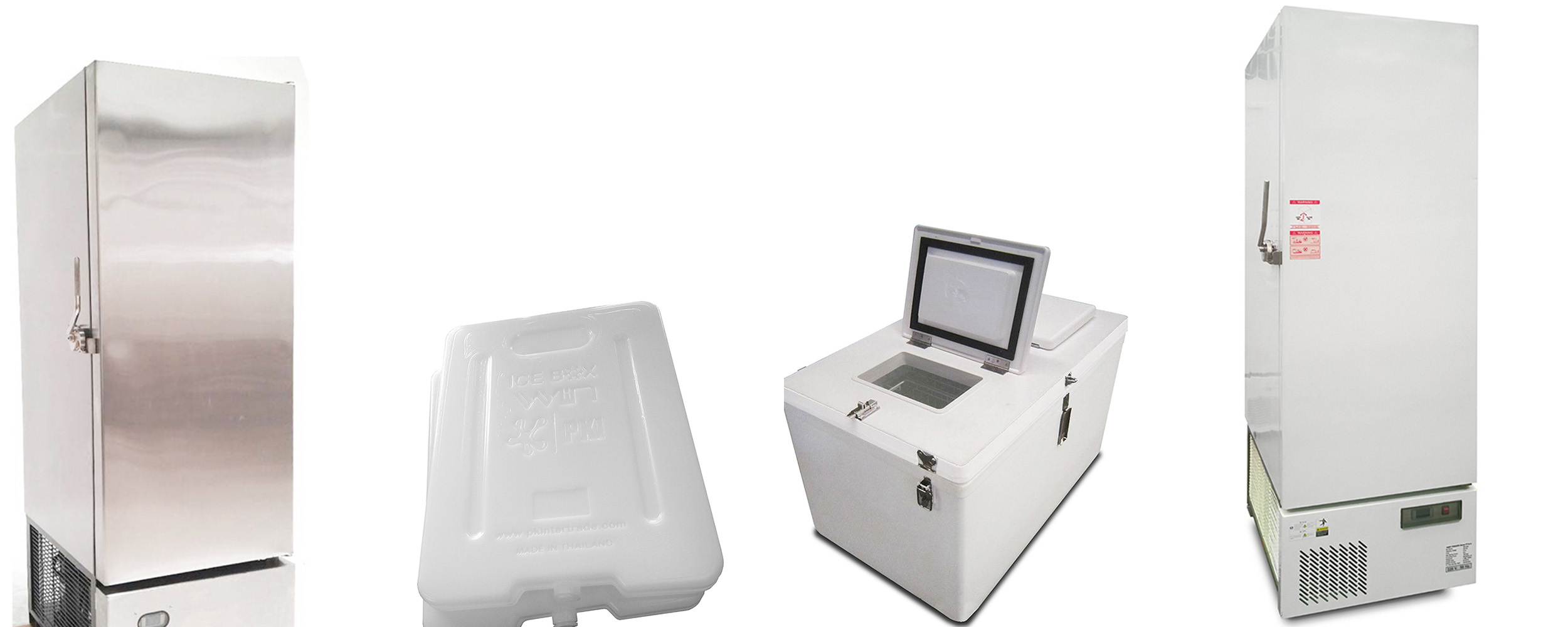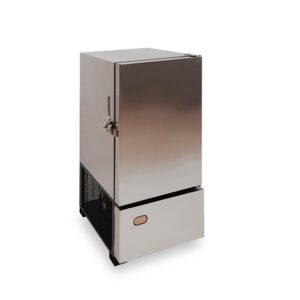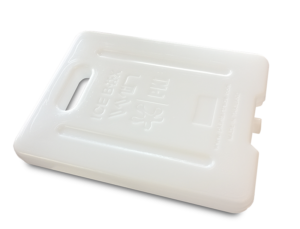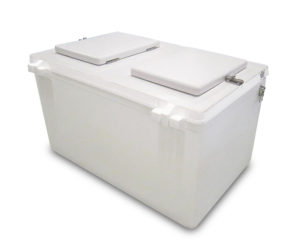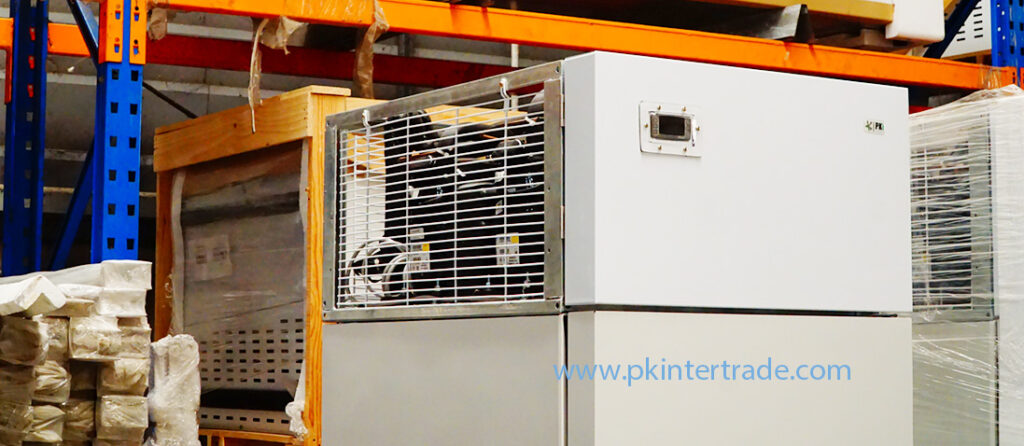A cold plate freezer is a type of refrigeration system that uses cold plates to achieve direct cooling of the objects placed on or around them. Cold plate freezers are widely used in applications where precise temperature control is required, such as in food storage, laboratory environments, and transportation of temperature-sensitive goods.
Below are the detailed principles, components, and functions involved in the operation of a cold plate freezer:
- Refrigeration Cycle in Cold Plate Freezer
The refrigeration system at the heart of a cold plate freezer operates on a standard thermodynamic cycle. The system works by transferring heat from the inside of the freezer (from the object placed on the cold plate) to the surrounding environment. The key components are as follo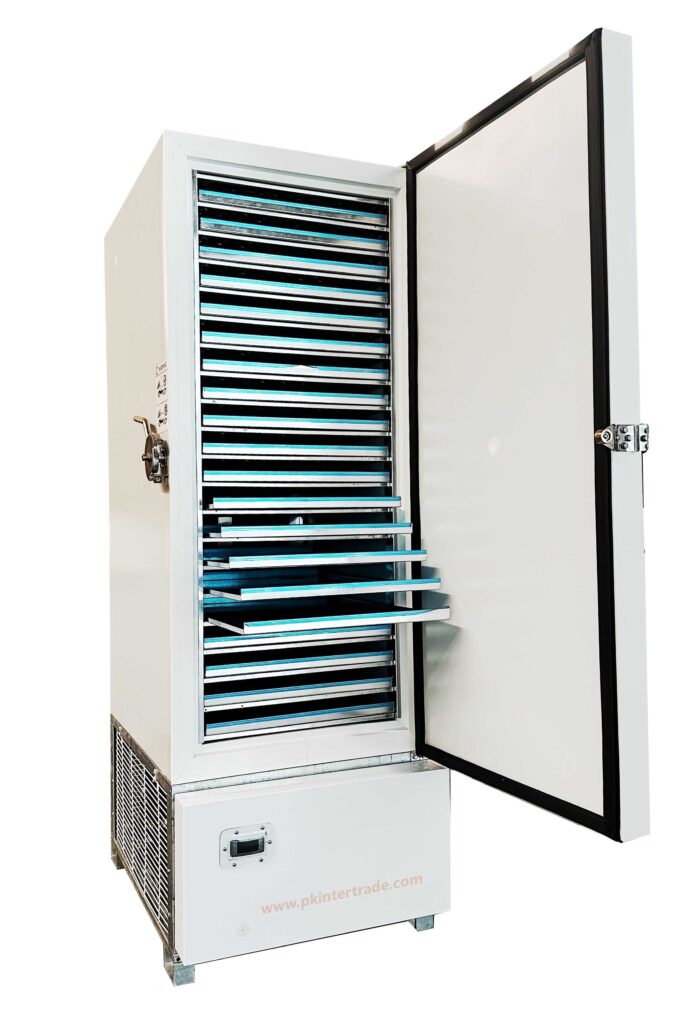 ws:
ws:
A. Compressor
- Function: The compressor is the heart of the refrigeration cycle. It compresses the refrigerant gas, raising both its pressure and temperature, and pushes it through the refrigeration system.
- Effect: The refrigerant is now a high-pressure, high-temperature gas.
B. Condenser
- Function: The high-pressure refrigerant gas flows into the condenser, where it cools and condenses into a high-pressure liquid as heat is dissipated to the surrounding environment (often via a fan or water-cooled system).
- Effect: The refrigerant loses heat to the surrounding environment, converting from a gas into a liquid state.
C. Expansion Valve (or Capillary Tube)
- Function: The high-pressure liquid refrigerant passes through the expansion valve, which reduces its pressure as it moves into the evaporator. The sudden pressure drop causes the refrigerant to expand and evaporate, turning it into a cold, low-pressure gas.
- Effect: This cooling effect is critical for absorbing heat from the cold plate.
D. Evaporator
- Function: The low-pressure refrigerant enters the evaporator, which is in direct contact with the cold plate or embedded inside it. As the refrigerant evaporates, it absorbs heat from the surrounding environment or from the surface in contact with the cold plate.
- Effect: The refrigerant evaporates, taking the heat away from the cold plate (and the objects placed on it), which causes the cold plate to cool down.
- Cold Plate: A cold plate is typically made of metal (often aluminum or copper) because these materials have high thermal conductivity, enabling efficient heat transfer. The cold plate is often hollow, allowing refrigerant or a coolant to circulate inside it. This cold plate is attached to or placed directly in contact with the items being cooled or frozen. In some systems, a heat exchanger is used to transfer the cooling from the refrigerant to the cold plate, which may be designed as a grid, coil, or flat surface.

- Direct Contact Cooling of the Cold Plate
- Thermal Transfer: Once the refrigerant has absorbed heat from the evaporator, the refrigerant leaves the evaporator in its low-pressure gas state. The cold plate, in direct contact with the object (such as food or biological samples), absorbs heat from it. The heat transfer occurs via conduction (direct contact) from the object to the cold plate and then through the plate to the refrigerant.
- Freezing Process: The heat absorbed from the object causes its temperature to drop. If the object is placed on the cold plate for a sufficient amount of time, the temperature of the object will decrease to below its freezing point, resulting in freezing or maintaining the object at a low temperature.
- Efficient Freezing: Since the cooling is in direct contact with the object, heat transfer is more efficient than methods like air blast freezing. This ensures a quicker freezing process, which is ideal for preserving the quality of the frozen items (e.g., preventing ice crystal formation in food products).
- Energy Efficiency and Cooling Control
- Localized Cooling: Cold plate freezers typically only need to cool the direct contact area (the cold plate), rather than cooling the entire air volume inside the freezer. This reduces energy consumption compared to air-based cooling methods, where cold air must circulate throughout the entire chamber.
- Insulated Compartments: The cold plate freezer chamber is typically insulated to maintain the temperature and prevent heat from entering. This insulation reduces the load on the refrigeration system, making it more energy-efficient.
- Temperature Control: Cold plate freezers are equipped with temperature sensors and controllers to maintain the temperature within a specified range. This ensures that the items placed on the cold plate are kept at the desired temperature, whether it is for short-term freezing or long-term storage.
- Applications of Cold Plate Freezers
Cold plate freezers are versatile and are used in a variety of fields due to their ability to provide rapid, direct cooling. Some key applications include:
a. Food Preservation
- Cold plate freezers are used for flash freezing food products, such as meat, fish, vegetables, and prepared meals. This process helps preserve the food’s texture, flavor, and nutritional value by freezing it quickly at low temperatures, preventing the formation of large ice crystals
b. Transportation of Perishable Goods
- In cold chain logistics, cold plate freezers are commonly used in refrigerated trucks or containers to transport temperature-sensitive items like pharmaceuticals, fresh produce, and seafood. The cold plates maintain the required temperature during transport.
c. Biological and Medical Applications
- Cold plate freezers are used in laboratories and healthcare for the storage of biological samples, vaccines, or medications that require precise and stable low-temperature environments. The efficient cooling helps maintain the integrity of these samples over time.

d. Industrial Cooling
- In some industrial applications, cold plate freezers are used to cool machinery, electronics, or other items that generate heat during operation. The cold plates provide localized cooling for sensitive components.
- Advantages of Cold Plate Freezers
- Faster Freezing: Direct contact cooling with the cold plate allows for rapid freezing of items, reducing the time needed for the freezing process.
- Energy Efficiency: The localized cooling minimizes energy use, as only the cold plates need to be cooled instead of the entire chamber.
- Uniform Temperature Distribution: Cold plate freezers provide even temperature distribution across the cooled items, reducing the risk of temperature fluctuations that could affect product quality.
- Compact Design: These freezers are often more compact compared to traditional freezer designs, making them ideal for applications with limited space.
- Challenges
- Initial Setup Cost: The upfront cost for a cold plate freezer system can be higher than traditional freezing methods due to the specialized components (cold plates, refrigeration systems, etc.).
- Maintenance: The system requires periodic maintenance of the refrigerant and refrigeration components, such as the compressor and expansion valve, to ensure optimal performance.
In conclusion, a cold plate freezer operates on the principle of direct heat transfer through cold plates cooled by a refrigeration system, enabling efficient, rapid, and localized cooling. This makes it an ideal solution for applications requiring precise temperature control, such as in food preservation, medical storage, and transportation of perishable goods.
A cold plate freezer operates on the principle of direct cooling using cold plates, which are metal surfaces that absorb heat from items in contact with them. These cold plates are cooled by a refrigeration system consisting of a compressor, condenser, expansion valve, and evaporator. The refrigerant in the system absorbs heat from the cold plate, cooling it and freezing or maintaining the temperature of the items placed on it.
The process involves the refrigerant cycling through the system, cooling the cold plate by heat absorption, and allowing items to freeze quickly. Cold plate freezers are energy-efficient because they cool only the direct contact area, and they are often used in applications requiring rapid freezing or precise temperature control, such as in food preservation, biological sample storage, and transportation of perishable goods.
Contact US now to obtain more information and consultation.
